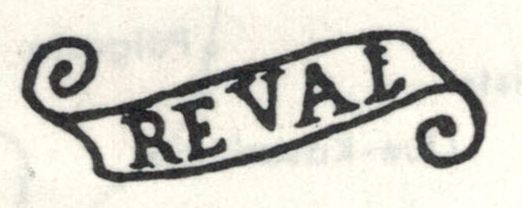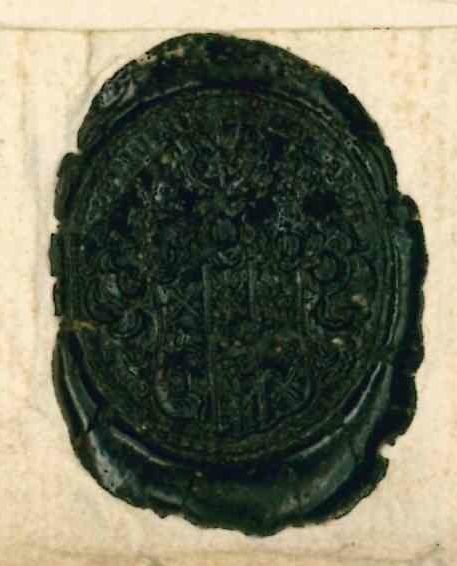Estonia
-
Royal Swedish Mail
Development until 1638
At the beginning of the 13th century, Estonia was missionised from Denmark. Denmark and the Order of the Brothers of the Sword resp. the Teutonic Order initially fought for supremacy, before in 1346 the north of today's Estonia (the provinces of Harrien and Wiru) passed from Denmark to the Order. Until 1918, the term "Estonia" was limited to this part of the country.

The Teutonic Order and the Baltic States at the Beginning of the 15th Century
(Image: Wikimedia Commons)
From the Hanseatic League to the Livonian War
During the 14th and 15th centuries, Reval (Tallinn), Dorpat (Tartu), Pernau (Pärnu) and Fellin (Viljandi) belonged to the Hanseatic League of Cities, whose messengers by sea and land maintained a close communication network in Northern and Central Europe. The war between Russia and the Livonian Confederation between 1558 and 1582 led to the extensive destruction of this network and large parts of present-day Estonia.
With the peace treaty of 1583, Estonia was divided between Russia, Poland, Denmark and Sweden. While the northern part was de facto under Swedish rule from 1561, the south of today's Estonia around Dorpat, together with the north-eastern half of today's Latvia, formed the Duchy of Livonia (Estonian Liivimaa, Latvian Vidzeme, Polish Inflanty) under Polish rule. In the Treaty of Altmark in 1629, the entire mainland of what is now Estonia was given to Sweden, and in 1645 the island of Ösel (Saaremaa) as well. (Source: Wikipedia)
1638 – 1710 Royal Swedish Post
Postmaster Jacob Becker
The postal history of Estonia in the narrower sense began in 1632 with the appointment of Jacob Becker from Riga as postmaster in Dorpat (Tartu). On 26 September of that year, he published a "PostOrdnung" (postal order) there, with which he became the creator of the first general and publicly accessible postal traffic in today's sense. Becker's "PostOrdnung" specified the times of departure and arrival times of the post from and to Riga, determined the duration of the journey in days as well as the postage in Reval Marks per lot of 13.5 grammes. Becker employed post riders and organised stations for changing horses at inns on the routes
Riga – Dorpat (Tartu),
Dorpat (Tartu) – Wesenberg (Rakvere),
Dorpat (Tartu)– Pernau (Pärnu),
Dorpat (Tartu)– Reval (Tallinn) and
Reval (Tallinn) – Pernau (Pärnu).
The State Post
The foundation of the Swedish State Post Service dates back to a decree issued by Queen Christina in 1636. Initially limited to the Swedish motherland, the decree of September 6, 1638 extended the State Post Service to the governorates of Estonia, Livonia, Ingermanland and Finland. This date is therefore rightly regarded as the actual founding day of the state postal service in Estonia.
A total of eight Royal Swedish post offices opened their counters on what is now Estonian territory:
in the Estonian Governorate: Reval/Refvall (Tallinn), Hapsal/Hapsall (Haapsalu) and Wesenberg (Rakvere);
in the Livonian Governorate: Dorpat/Dorpt (Tartu), Pernau (Pärnu), Arensburg (Kuressaare) and Walk (Valga, Valka);
in the Ingermanland governorate: Narwa/Narfwen (Narva).


So far, only two post offices are known to have used a so-called Banderol or Bandeau postmark in the first years of the 18th century until 1710: Reval (Tallinn) and Pernau (Pärnu). Picture credits: Hurt/Ojaste: Estonia Handbook 1986
These postmarks were used until the loss of the Baltic territories to Russia in 1710 and are considered exceptionally rare.

1710: Parcel accompanying letter from the time of the Great Nordic War to Andreas Timmermann in Narva (hostile foreign country during this time)
Picture credits: 359th Köhler Auction, lot no. 5002

According to an expert at the Stockholm Postal Museum, the particularly clear strike of the Swedish Banderol postmark - described as the most beautiful known so far - suggests that it dates from the beginning of the postmark period, i.e. from 1708.
The sender was Axel Julius de la Gardie (seal on the reverse), the recipient's address reads:
To the well Noble Bailiff and
Doughty Master Capitain
Gotthard Wilhelm von Essen
LinköpingAccording to the Swedish letter tax of December 14, 1692, which was applied from January 1, 1693 and was valid on the territory of present-day Estonia until 1710, such a letter from Pernau to Linköping cost 9 silver öre per lot (13.5g)
The period of Swedish rule in Estonia ended under international law in 1721 with the Peace of Nystad (Uusikaupunki), which ended the Northern War (1701–1721). In fact, for large parts of present-day Estonia it ended as early as 1710 with the "capitulations" of the citizens of numerous cities, including that of the council of the city of Reval (Tallinn) in that year. With them, the councillors took an oath to Tsar Peter I and thus recognised Russian suzerainty.

Statue of Peter I in Tallinn (Unveiling 29.9.1910, Removal 1.5.1922, see Article by Karl Lukas in Eesti Post No. 51 / 2010 p. 20 ff. )
-
Imperial Russian Post
-
German occupation / Ob. Ost
-
Independent Republic of Estonia
-
Soviet occupation
-
German occupation / Ostland
-
Camp Mail / Estonians in Exile
-
Independent Republic of Estonia (restored)
-
Private Mail in Estonia



